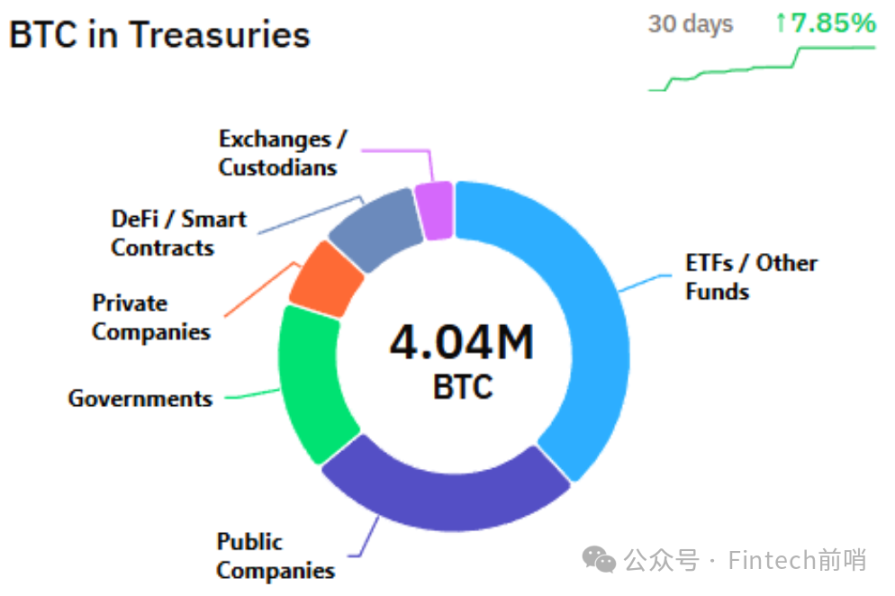Author: Lyv
Introduction
This year, gold has been in the spotlight—amid trade frictions, fluctuations in U.S. Treasury yields, and geopolitical tensions, gold has outperformed Bitcoin, the Nasdaq, and all mainstream asset classes, with calls for its "return of the king" echoing as its year-to-date increase has surpassed 50%. In contrast, Bitcoin, which has gradually gained a safe-haven attribute in recent years, has only risen about 15%. This significant divergence has sparked heated discussions in the market about "why is gold strong while Bitcoin is weak?" and "is Bitcoin still worth investing in?"
By carefully analyzing the historical pricing patterns and buying logic of gold, we still maintain that Bitcoin, as an emerging safe-haven tool in the digital age, is currently undergoing a historical phase of "safe-haven + risk duality." In the long run, Bitcoin's uniqueness and rarity imply that it possesses significant long-term allocation value similar to gold; meanwhile, the current low allocation of Bitcoin in global investment portfolios indicates higher allocation leverage and potential returns.
This article systematically outlines our allocation framework in a Q&A format, covering aspects such as the evolution of safe-haven logic, the hedging mechanisms between gold and Bitcoin, long-term allocation ratios, and tail risk pricing, while incorporating perspectives from mainstream global institutions and investors to further argue why Bitcoin deserves a higher strategic focus in current and future global asset portfolios.
Q1. Theoretically, both gold and Bitcoin have safe-haven attributes, but how do their roles differ?
Answer: The market generally views gold as a mature safe-haven asset in the traditional "carbon-based world." In contrast, Bitcoin can be seen as a new value storage asset in the "silicon-based world," rather than a mature safe-haven tool, and it still retains strong characteristics of a risk asset. We observed that before the approval of Bitcoin ETFs in early 2024, the correlation between Bitcoin prices and the Nasdaq index was as high as 0.9; after the ETF approval, this correlation dropped to 0.6 and began to follow global M2 liquidity, exhibiting "anti-inflation" properties similar to gold.
Goldman Sachs has pointed out that while Bitcoin offers higher returns compared to gold, its volatility is extreme. When risk appetite is strong, Bitcoin often behaves like stocks, and when the stock market declines, Bitcoin's hedging effect is inferior to that of gold. Therefore, gold is currently more reliable as a safe haven, while Bitcoin is still transitioning from a risk asset to a safe-haven asset.
Ray Dalio, founder of Bridgewater Associates, also emphasized that if investors need to maintain neutrality and diversify risk in their asset allocation, they might consider gold or Bitcoin, but he personally prefers gold, a historically tested hedging tool. He noted that while Bitcoin has limited supply and some store of value potential, it is far from matching gold's long-standing historical support as a safe-haven asset.
Q2. What have been the main drivers of gold prices since 2007? Why did central banks become the main buyers of gold after the Russia-Ukraine war in 2022?
Answer: Since the global financial crisis in 2007, U.S. real interest rates have become one of the key drivers of gold prices. Since gold itself does not generate interest (being a "zero-coupon" asset), its price is negatively correlated with real interest rates—when real interest rates rise, the opportunity cost of holding gold increases, and gold prices tend to fall; conversely, when real interest rates decline (or even turn negative), gold's relative attractiveness increases, leading to higher prices. We have observed this relationship to be very significant over the past fifteen years: for example, after the Fed cut rates post-2008, real yields fell, triggering a surge in gold prices, while the rebound in real rates starting in 2013 put pressure on gold prices; during the Fed's negative interest rate period in 2016, we saw significant inflows into North American ETFs.
After the outbreak of the Russia-Ukraine war in 2022, global central banks significantly increased their gold holdings, becoming a new driving force for gold prices. That year, net purchases of gold by central banks set a historical record, exceeding 1,000 tons annually thereafter. According to Metals Focus, the annual gold purchases by central banks since 2022 have far exceeded the average levels of previous years (averaging 457 tons from 2016 to 2021), with an expected purchase of about 900 tons in 2025. These official purchases contributed to 23% of global annual gold demand from 2022 to 2025 (over 40% of investment demand), double the proportion seen in the 2010s. Currently, global central banks hold nearly 38,000 tons of gold, accounting for over 17% of the total surface gold supply, and 44% of the total investment use excluding jewelry and technology, with room for further increases.
The latest survey by the World Gold Council shows that central banks continue to hold an optimistic outlook on gold. The vast majority of respondents (95%) believe that global central bank gold reserves will increase over the next 12 months; a record 43% of respondents expect their own country's gold reserves to increase during the same period, with no one expecting a decline.
The motivations behind central banks' "gold buying spree" stem from 1) geopolitical hedging and 2) diversification of reserve assets: the Western sanctions that froze half of Russia's foreign reserves due to the Russia-Ukraine conflict have led many emerging countries to consider replacing some dollar assets with gold. As U.S. debt skyrockets and credit prospects become worrisome, the attractiveness of dollar assets like U.S. Treasuries has relatively declined, further enhancing gold's appeal as a reserve asset and safe-haven tool.
Additionally, the allocation needs of some large long-term investment institutions arise from the increasing moments of failure in the "stock-bond seesaw": since 2022, stocks and bonds have shown more positive correlation, diverging from the "60/40 stock-bond allocation" narrative familiar to us over the past 20 years.
Q3. What major tail risks does gold's safe-haven function primarily hedge against?
Answer: From the analysis above, it is clear that gold's future safe-haven value should primarily focus on hedging two relatively independent extreme tail risks:
- U.S. debt or inflation crisis (i.e., dollar credit / sovereign debt risk)
- Major geopolitical economic conflicts
Firstly, in scenarios of uncontrolled debt or high inflation, fiat currencies may significantly depreciate or even face credit crises, highlighting gold's role as a long-term store of value and inflation hedge. A survey conducted by the World Gold Council among nearly 60 central banks shows that the primary motivation for holding gold is to view it as a long-term value reserve and inflation hedge, as well as an asset that performs well during crises. Central bank officials also see gold as an effective portfolio diversifier to hedge against economic risks (such as stagflation, recession, or debt defaults) and geopolitical risks.
For example, the rapid rise in U.S. debt raises concerns about the long-term value of the dollar, and gold can act as a "shield" in such extreme situations. Secondly, in terms of geopolitical conflicts, gold is viewed as a safe haven during turbulent times. Whenever wars or international tensions arise, such as the U.S.-China trade war in 2018, the Russia-Ukraine war in 2022, or the U.S. tariff impacts in 2025, safe-haven funds often flow into gold, driving up its price. Economic historical backtesting studies have also shown a positive "power law" relationship between gold prices and trade policy uncertainty (Trade Policy Uncertainty Index) over the past decade.
This also explains why gold has recently outperformed Bitcoin: during the new round of escalation in U.S.-China trade tensions, central banks and long-term investment institutions, as the main allocators, should favor the assets they are more familiar with—gold—given the rising uncertainty regarding the long-term bull market in U.S. Treasuries.
Q4. In an ideal asset allocation, how should the proportion of gold reflect expectations of tail risks?
Answer: Gold is often likened to "insurance" for an investment portfolio—while it may drag down returns during normal times, it provides protection during crises. Therefore, when managers believe the risk of extreme events in the future is rising, they often increase their gold holdings as a hedge. Gold can significantly alleviate potential losses in a portfolio during periods of financial stress, demonstrating stable diversification returns during severe market downturns (left-tail events). Particularly because part of the demand for gold comes from central banks, the technology sector, and consumers, its price movements do not completely synchronize with financial assets. In some asset allocation frameworks, gold is specifically designated for tail risk hedging purposes: for example, certain insurance funds and pension funds position gold as a highly liquid asset that can be liquidated in times of crisis to offset losses in other assets.
In short, the weight of gold in a portfolio can be seen as a reflection of the fund manager's assessment of the probability of extreme tail risks occurring. If fund managers believe that the probability of the aforementioned two tail events occurring in the next 5-10 years is rising, then increasing the proportion of gold in the portfolio is reasonable. This allocation is akin to purchasing insurance for the portfolio, with the size of the proportion reflecting the manager's subjective probability judgment regarding catastrophic events.
Now we can conduct a simple and interesting thought experiment: if we believe that the probability of the two major risks mentioned above materializing in the next 5 years is 10% (for example, 5% + 5%), then the proportion of our allocation to hedge against these two types of risk assets should also be increased to 10%; if we look ahead to the next 10 years and the probability rises to 15%-20%, our allocation proportion seems to need to increase to 15-20%. Over time, we believe that the probability of these two tail risks materializing will only increase.
Q5. What is the current proportion of gold and Bitcoin in global asset allocation? What suggestions do market participants have for increasing their weight?
Answer: According to Goldman Sachs' latest research report, gold currently accounts for about 6% of global investment portfolios, while Bitcoin accounts for only about 0.6%, which is roughly one-tenth of gold's allocation (the total market value comparison is even smaller), indicating that Bitcoin is still in the early stages of asset allocation (in contrast, gold is already a mainstream asset).
Given the recent turmoil in the global macro environment, many well-known institutions and investment masters are calling for an increase in the allocation weight of gold (and to some extent Bitcoin). Ray Dalio of Bridgewater Associates recently stated that from a strategic asset allocation perspective, the proportion of gold in the portfolio should be increased to around 10%-15%, significantly higher than the traditional advisory recommendation of around 5% for gold. Notably, Dalio had previously suggested only about 1-2% allocation for Bitcoin/gold in 2022, but now, due to rising risks, he has increased this proportion several times to 15%, reflecting his reassessment of the importance of safe-haven assets.
Other well-known investors have echoed similar sentiments: for example, Jeffrey Gundlach, founder of DoubleLine Capital, recently stated that allocating nearly a quarter (25%) of a portfolio to gold would not be excessive. Some studies and historical backtesting results also support a higher gold allocation: a long-term simulation analysis by an asset management firm shows that a gold allocation of about 17% yields the highest risk-adjusted return for the portfolio.
Regarding Bitcoin, as institutional attitudes shift, there are also suggestions to moderately increase its allocation. For instance, Grayscale has recommended considering Bitcoin as one of the "core assets," with an allocation ratio of 5%-10%. Overall, the current global allocation to gold is significantly higher than that to Bitcoin, but there is a widespread belief that it is necessary to increase the weights of both in traditional portfolios to enhance resilience against extreme risks.
Q6. Returning to our thought experiment: If we believe there is a 10% tail risk in the next 5 years and a 20% tail risk in the next 10 years, how should we adjust the allocations of hedging assets like gold and Bitcoin accordingly?
Answer: Under the assumption that the probability of tail risks cannot be ignored, investors should significantly increase their allocation to safe-haven assets compared to conventional scenarios. Experience shows that when extreme events are anticipated, proactively positioning in hedging assets like gold and Bitcoin can help protect the portfolio from shocks. This approach is similar to a "black swan" hedging strategy: using a small portion of capital to hedge against low-probability, high-impact risks.
From a probability mapping perspective, to hedge against a 20% tail risk, the portfolio needs to allocate an equivalent amount of hedging assets, meaning the total allocation to gold and Bitcoin should reach 20%. Assuming we increase the gold weight to 15% and Bitcoin to 5%, then the proportion of gold in global holdings will rise from the current approximately 6% to 15%, which is an increase of 2.5 times; while Bitcoin will increase from about 0.6% to 5%, an increase of over 8 times.
This indicates that in an idealized hedging portfolio, the potential for increasing Bitcoin's allocation (relative to the current baseline) is much greater than that of gold. As a mature asset, gold's global holdings and allocation ratios are already substantial, and increasing it by more than double would require a massive amount of capital; whereas Bitcoin starts from a low base, and even a few-fold increase would still represent a small proportion of global assets. This disparity in potential increases also means that Bitcoin's price is more sensitive to incremental allocations—small inflows can significantly boost its price.
In actual market operations, institutional investors have already begun to reflect this idea. Some large investment banks have actively included a cap on cryptocurrency asset allocations in recent years to guard against systemic risks. Morgan Stanley's Global Investment Committee has, for the first time, included Bitcoin in its asset allocation model, suggesting a maximum allocation of 4% to cryptocurrencies for aggressive growth portfolios aimed at high-risk clients (with a cap of 2% for balanced portfolios and no allocation for conservative portfolios).
Additionally, some analysts have pointed out that if Bitcoin gradually gains a reserve status similar to gold, its market value could approach that of gold. Of course, this requires many preconditions, but in terms of potential allocation increases, Bitcoin has a greater global asset allocation leverage compared to gold (2.5x vs 8.0x). This is also why, while emphasizing an increase in gold positions, many institutional investors are beginning to pay attention to allocating a certain amount of Bitcoin: the combination of the two can hedge against traditional financial risks while also capturing the excess returns from the rise of emerging safe-haven assets.
Q7. Relative to gold, what advantages or uniqueness does Bitcoin offer as an asset in a portfolio?
Answer: We believe that from a purely economic design perspective, Bitcoin can be a more suitable safe-haven asset than gold over the long term, demonstrating a more rigid hedging capability against the aforementioned two tail risks.
First, supply rigidity. The issuance of Bitcoin is permanently capped at 21 million coins, unlike fiat currencies that can be infinitely printed or commodities that can have new reserves discovered or improved recovery efficiencies. This "silicon-based digital scarcity" makes it a scarce asset similar to gold, with long-term potential for inflation resistance. More importantly, Bitcoin's annual inflation rate has dropped below 1% after the halving in 2024, far lower than gold's annual new supply of 2.3%.
Second, the "Buy and Hold" position remains low. Our analysis shows that the current allocation of mainstream institutional investors to Bitcoin is very small, with "Buy and Hold" participants holding no more than 10%, and including all ETF holders, only 17% (the ETFs contain a large number of hedge funds and retail investors, not all of whom can be counted as "Buy and Hold"). In comparison, the "Buy and Hold" holders of gold had reached 65% of investment-grade gold by the end of 2024, with central banks accounting for 44% and ETF holdings only 4%.
This indicates that as recognition increases, there is significant potential for future allocation increases. Larry Fink, CEO of BlackRock, recently publicly referred to Bitcoin as "the new generation of gold" and supports its inclusion in pension funds and other long-term capital allocations.

Third, on-chain transparency. All Bitcoin transactions are recorded on a public blockchain, accessible for anyone to query and verify. This unprecedented transparency enhances market trust, allowing investors to monitor the circulation and reserve status of the Bitcoin network in real-time, eliminating the "black box" nature of the asset. In contrast, central bank gold reserves and over-the-counter transactions often lack real-time transparency.
Fourth, decentralized censorship resistance. The Bitcoin network is maintained by countless nodes globally, with no central authority able to unilaterally control or invalidate transactions. This decentralization provides strong censorship resistance—no country or institution can easily freeze or confiscate Bitcoin accounts, nor can they dilute its value through excessive issuance. In extreme cases, non-physical holdings of gold also carry counterparty risk; during wartime, gold may face risks of embargoes and confiscation, while Bitcoin only requires electricity, internet access, and a private key to complete value storage and payment transfers.
In summary, Bitcoin's fixed supply and technological architecture endow it with inherent characteristics of inflation resistance, low correlation, and censorship resistance. This positions it to play a new role as a store of value and risk hedge in long-term asset allocation in the digital age, serving as a beneficial complement to gold and other safe-haven assets.
免责声明:本文章仅代表作者个人观点,不代表本平台的立场和观点。本文章仅供信息分享,不构成对任何人的任何投资建议。用户与作者之间的任何争议,与本平台无关。如网页中刊载的文章或图片涉及侵权,请提供相关的权利证明和身份证明发送邮件到support@aicoin.com,本平台相关工作人员将会进行核查。




